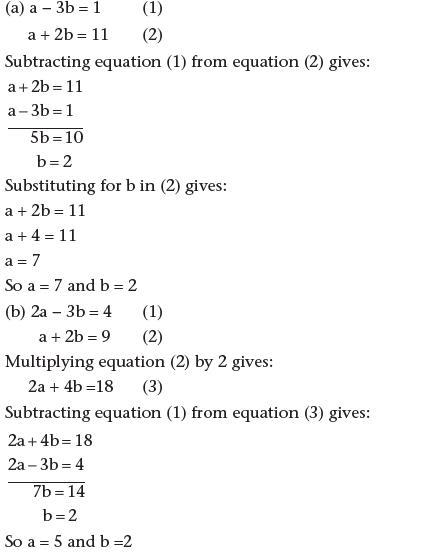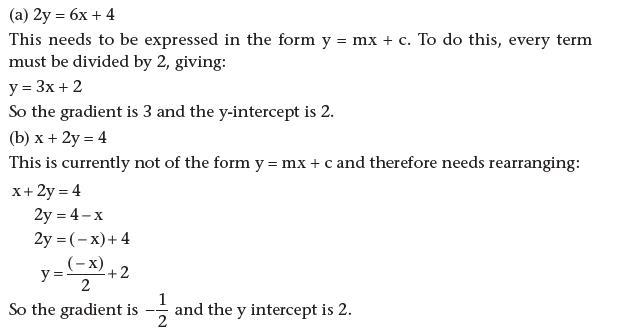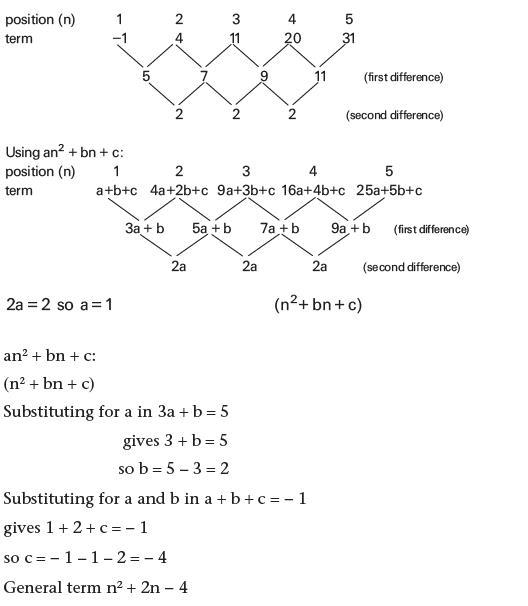Chapter 5 – Algebra, equations, functions and graphs
Consider the following statements and click to reveal the answer.
1. Simplify the following expressions:

Answer:

2. Find the general term for each of these sequences:

Answer:

3. Solve the following pairs of simultaneous equations:

Answer:

4. Find the gradients and the y-intercepts of the graphs of the following equations:

Answer:

5. Find the general term for the following sequence:

Answer:

Answer:
A conjecture is a hypothesis: something that has been surmised or deduced.
7. What different methods can be used to solve simultaneous linear equations?
Answer:
The methods that can be used to solve simultaneous linear equations are:
- ‘trial and improvement’ (or ‘guess and check’ but not ‘trial and error’ as this implies a mistake);
- eliminating the unknown by multiplying one of the equations to ensure that there is an equal number of a particular unknown in each equation;
- expressing one unknown in terms of another in one of the equations, then substituting the new expression into the other equation, which is then rearranged to find the solution.
Answer:
A function is a rule that changes or maps one number onto another, often represented in primary schools as a ‘function machine’.